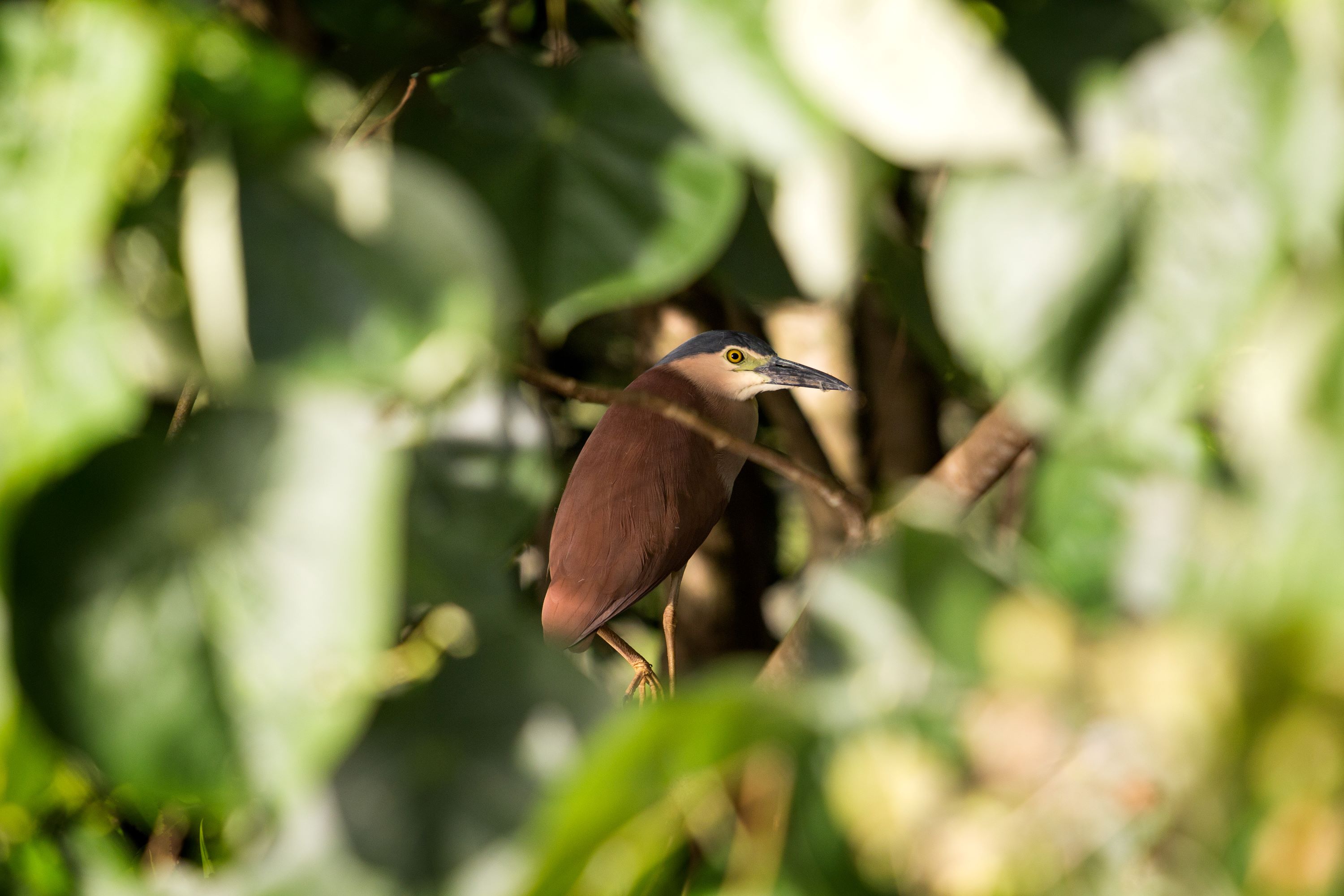
Black-backed Bittern: The Stealthy Inhabitant of Australasian Wetlands
Introduction to the Black-backed Bittern
The Black-backed Bittern, scientifically known as Ixobrychus dubius, is a rare and elusive species within the heron family Ardeidae. This small, secretive bird is known for its distinctive black back, contrasting with its otherwise buff and brown plumage, and its specialized habitat preferences.
Physical Description
The Black-backed Bittern is a small bittern, measuring approximately 25 to 30 cm in length. It features a striking black back and crown, which stand out against its buff-colored underparts and brown-striped chest and flanks. This bittern has a yellow bill and eyes, and during flight, its broad wings and short tail are noticeable.
Habitat and Distribution
Native to Australasia, the Black-backed Bittern is primarily found in Australia, with some populations in Papua New Guinea and Indonesia. It inhabits freshwater wetlands, including swamps, reed beds, and marshes. These environments provide dense vegetation for cover and a rich supply of food.
Behavior and Lifestyle
Like other bitterns, the Black-backed Bittern is notoriously secretive and elusive. It is most active at dawn and dusk (crepuscular) and occasionally nocturnal. During the day, it remains well-hidden in dense vegetation, making it a challenging species for birdwatchers to spot.
Feeding Habits
The diet of the Black-backed Bittern mainly consists of small fish, amphibians, and aquatic invertebrates. It hunts by standing still or slowly stalking its prey in shallow water before striking quickly with its sharp bill.
Breeding and Nesting Habits
The breeding behavior of the Black-backed Bittern is not well-documented due to its secretive nature. However, it is believed to nest in dense reed beds, constructing a platform-like nest made of reeds and grasses, slightly above the water level.
Egg Laying and Incubation
The female Black-backed Bittern lays a clutch of about 3 to 5 eggs. These eggs are incubated primarily by the female and hatch after about 20 to 25 days.
Chick Rearing and Parental Care
The chicks of the Black-backed Bittern are born altricial and rely on the female for feeding. They are fed regurgitated food and grow rapidly, beginning to explore outside the nest within a few weeks.
Conservation Status
The Black-backed Bittern is currently classified as a species of Least Concern by the IUCN. However, it faces threats from habitat loss and degradation, particularly the draining and disturbance of wetlands. Conservation efforts focus on protecting and managing its wetland habitats.
Similar Species and Taxonomy
Belonging to the order Pelecaniformes, family Ardeidae, the Black-backed Bittern is part of the Ixobrychus genus, which includes several other small bittern species. It shares its habitat preferences and behaviors with other Ixobrychus species but can be distinguished by its unique plumage pattern and vocalizations.
The Black-backed Bittern in Utah
The Black-backed Bittern is not found in Utah or North America, as its distribution is restricted to the Australasian region. In Utah, bird enthusiasts can observe other members of the Ardeidae family in local wetlands.
Conclusion
The Black-backed Bittern, Ixobrychus dubius, remains an enigmatic and fascinating species within the Australasian wetlands. Its elusive nature, distinctive appearance, and specialized habitat preferences make it a species of interest to ornithologists and birdwatchers. Preserving the health and integrity of wetland ecosystems is crucial for the survival of this and many other species, underscoring the global importance of wetland conservation.